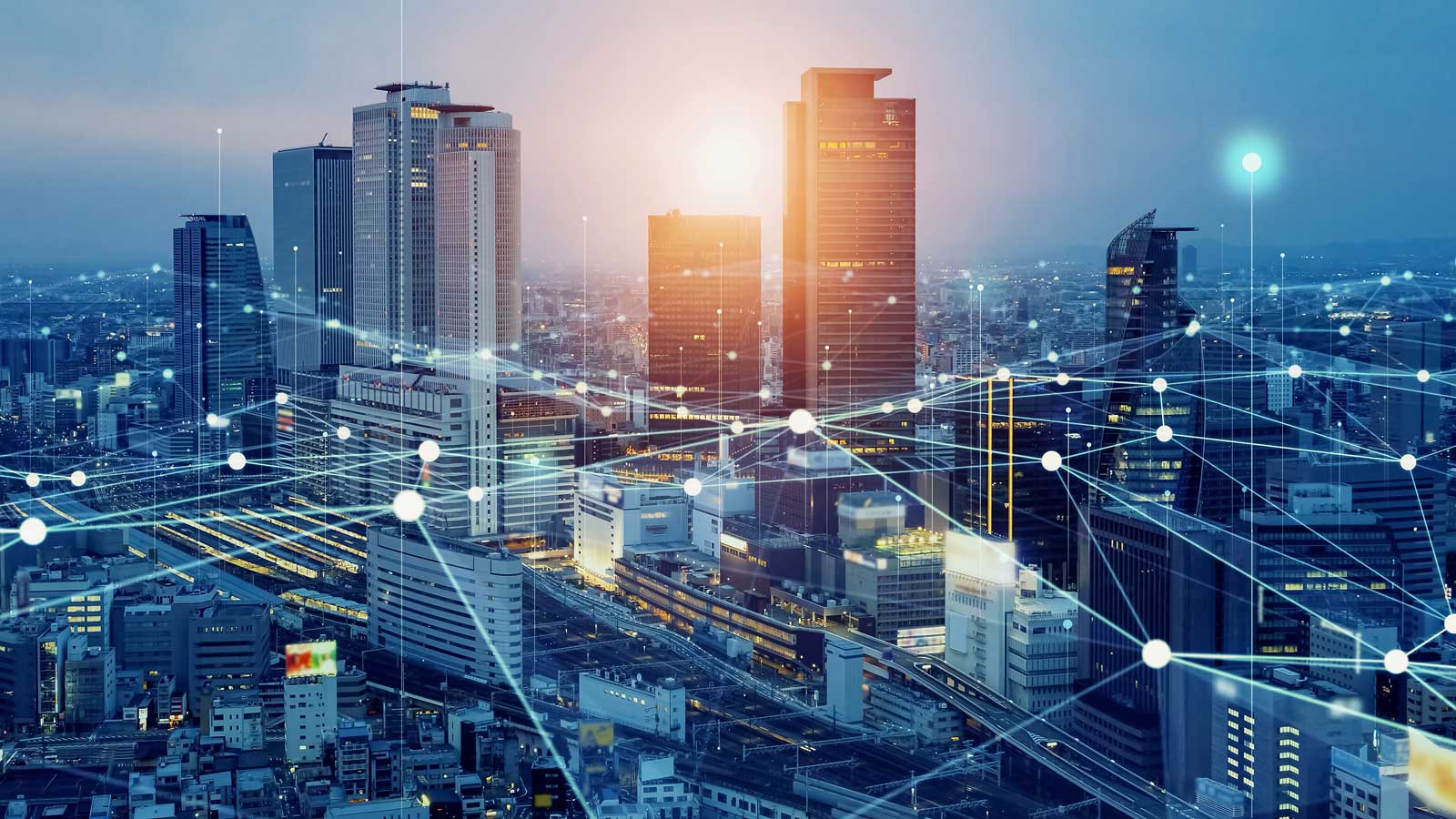Rethinking IoT Applications in the Elevator Industry
Jan 1, 2024

by Rob Wurth
This paper was presented at the 2023 International Elevator & Escalator Symposium in Edinburgh, Scotland.
Introduction
The technologies associated with the Internet of Things (IoT) industry have dramatically changed a wide range of industries, offering unprecedented control, transparency and analytics. From low-cost fleet tracking to remote locking of homes and vehicles, to health diagnostics in wearables, IoT technologies have enhanced many existing industries and have created completely new business models in the process.
However, the elevator industry has yet to truly embrace these technologies, and as a result, is being held back from advancement and value creation unnecessarily. This hesitation not only hampers the growth of our industry, but also risks letting non-industry players encroach upon our value chain. Think about the penetration of Apple CarPlay and Android Auto into the highly valuable automotive interface while carmakers continue to struggle with better in-house technology. It is high time we rethink IoT’s role in elevators for the benefit of our customers and the industry as a whole.
The Need for Change
The first step toward change is acknowledgement, and as it stands today, IoT technologies aren’t scaling in our industry in any meaningful way. Assuming approximately 16 million elevators globally, at even 1 million IoT-enabled elevators — which I suspect is generous — it would mean that less than 6.5% of elevators globally utilize IoT in a material way. Contrast this with more than 35% of cars projected to be connected by 2025.
While some may argue that change and advancement are not necessary — “if it ain’t broke…” — I posit that change is inevitable, and the risk is not that change doesn’t happen, but that, as an industry, we lose control over how these technologies impact our customers and the riding public. Failure to innovate on our own may lead to our industry losing ground to adjacent industries eager to provide the connected IoT solutions we are not delivering. Today, the average lifespan of a company in the S&P 500 is 18 years — if we don’t evolve, we risk becoming obsolete or, at best, marginalized.
How To Rethink IoT: A Multi-Faceted Approach
One of the main issues that prevents greater adoption of IoT technologies lies in an overly simplistic thinking that “IoT” is a single solution to be applied to our industry. This is fundamentally incorrect, as “IoT” is not a product but, in fact, a set of technologies that can be assembled together or added to existing solutions in order to ultimately create a product. Furthermore, both hardware and software have distinct roles to play in the deployment of IoT to the industry, which can cause additional confusion.
Instead of thinking about IoT as a single tool for solving every use case, below are a few examples of how hardware and software technologies could play multiple roles in IoT deployment and scale within the elevator industry:
Hardware
1. Troubleshooting: In this use-case, IoT technologies like low-cost sensors or discretely wired devices can be utilized on problem elevators for real-time diagnostics, thereby enabling faster resolution of issues that might otherwise be difficult to replicate or observe through traditional methods. Example: Utilizing an IoT device to remotely monitor vibration/ride quality and find the cause of intermittent shutdowns, which might be from a clipped door lock at the 5th floor where a rail bracket is loose.
2. Real-Time Information: Because of the connectivity that IoT can provide with cellular and other wireless technologies, it is now possible to view real-time information on elevators from anywhere in the world with minimal latency. This can greatly enhance security and control for building owners and managers, and provide insight to service providers for informed decision-making. Example: In applications where it is desired to know the exact position of elevators at all times (e.g. hospitals), it is possible to monitor the exact position of lifts at significantly lower cost than ever before.
3. Predictive Analytics: While it has yet to be demonstrated with efficacy at scale, it is believed that, with thoughtful use of IoT technologies and the resulting data captured, we will soon be able to predict the maintenance needs of elevators with sufficient warning so as to remedy root causes before said problems occur. Example: This is what most people think of when they think of “IoT” and would be utilizing any number of sensors and wired connections on an elevator to accurately predict various failure modes before they occur.
4. Business Model Innovation: Much like any other technology, the collection of IoT technologies applied to the elevator industry holds the potential for new business models that were previously not possible or economically impractical. It is impossible to know which new approaches might gain momentum, but just as cloud computing, 24/7 health wearables and mobile phone services looked different or were non-existent 10 years ago, we should expect to see new business models rising from the creative application of various IoT technologies. Example: New lift management services utilizing data insights, and new service and maintenance models that evolve and improve on the standard time-based maintenance methodology of our industry.
Software
1. Systems and workflows: At its core, one of the key attributes of software is its ability to automate business processes and human workflows. When capturing information via IoT hardware, it is critical to think about how a person or business might use this data to perform a job that needs to be done. By doing so, software automations can be designed to provide meaningful value at the intersection of IoT data, existing business processes and human workflows.
2. Analytics: While software can be used to quickly and efficiently deliver data from IoT devices to a user, there is tremendous value in using software tools to analyze the enormous amounts of data that might be generated by IoT devices at scale.
3. Alerts and notifications: Not everyone wants to view their elevator assets on a web browser every day, and in fact, lifts are frequently managed by their end-users by exception. For these reasons, alerts and notifications coordinated and delivered by software can provide tremendous value to a user and an overall business by delivering targeted and actionable insights at appropriate times.
Assessing IoT’s Value: Near and Long Term
Any re-thinking of IoT deployment in the elevator industry should include an honest assessment of the business value it can deliver. However, it is important to once again think of IoT as a set of technologies, and as such, something that can offer different levels of value with different applications, and on a variety of timelines. By requiring IoT to deliver business value in the near term, it becomes far more sustainable to continue investing in and deploying the technology in order to capture the larger, longer-term value propositions like predictive maintenance. Healthcare provides a relevant analogy here, in that we still have not discovered the key to stopping aging, but this does not prevent us from making significant medical advancements to improve our overall health while we continue to advance the study of diseases and aging. In similar fashion, we should seek to add incremental value to the industry, our customers and the riding public through IoT deployments, while continuing to advance the goal of utilizing its technologies in the pursuit of bigger goals in the future. The pursuit and achievement of the former will sustain investment in the latter.
A few additional rhetorical questions are listed below in an effort to spur thought and discussion around near and long-term value creation through IoT technologies in the lift industry:
- If a company maintaining 5,000 lifts were to install IoT devices that enable predictive-maintenance alerts today, how would it drive value in their business on day one?
- Maintenance and repair drives the majority of industry dollars globally. How might IoT-enabled elevators impact current maintenance contracts for the benefit of elevator owners?
- Do building owners/facility managers find value in IoT today at scale (100,000-plus elevators)? If yes, why has the technology not been adopted more?
IoT Deployed: Who Benefits?
A powerful misconception that continues to hold the industry back from IoT scaling is that the benefits will accrue to a particular company or only one side of the industry. On the contrary, with thoughtful deployment, companies of all types and parties from all sides of the industry should see meaningful benefits.
On the customer side, the owners of elevators — and those who manage the assets on their behalf — will find a greatly improved experience in managing their elevator assets through transparent communication on how their equipment is performing and being maintained. There is a tremendous opportunity here for quality service providers to engender trust with customers and secure long-term relationships as a result.
For equipment manufacturers, there is an opportunity to retrieve data from the field on how their designs are performing. With data across thousands of installations of varying conditions, R&D teams will be equipped with dramatically more robust and detailed data sets that can be used to inform product design and engineering decisions, ultimately leading to better products for end-users and much more efficient product development cycles for manufacturers.
Finally, on the service provider side, IoT technologies and devices have the potential to significantly improve operational efficiency by routing resources more effectively and efficiently either once on-site or before site arrival. This will allow for increased customer satisfaction, which should flow to the top and bottom line financials of service providers.
Actionable Proposals
Now that we have discussed why we should rethink IoT applications in the elevator and provided a proposed framework for how to think about it moving forward, a few actionable proposals that the reader might consider to capitalize on the opportunities for IoT in their respective area of the industry are:
1. Standardize Data Protocols: To ensure scalability and maximize value of IoT data within the context of other data sources.
2. Balance Near and Long-Term Goals: Consider both the immediate impact and long-term ramifications of IoT adoption.
3. Systems Thinking for Software: Think scale and deploy solutions across portfolios for maximum effectiveness and value creation.
4. Leverage Incumbent Strengths: Use IoT to enhance your unique position in the value chain.
Conclusion
In the elevator industry, the untapped potential of IoT is immense. By thoughtfully integrating IoT concepts at the industry-level while strategically deploying it at the individual company-level, we cannot only preserve but also expand our role and value in the built environment. The future belongs to those willing to adapt, innovate and think ahead, and IoT provides unique tools to achieve all of those objectives and more within the global elevator industry.
Get more of Elevator World. Sign up for our free e-newsletter.








